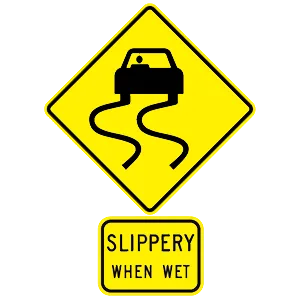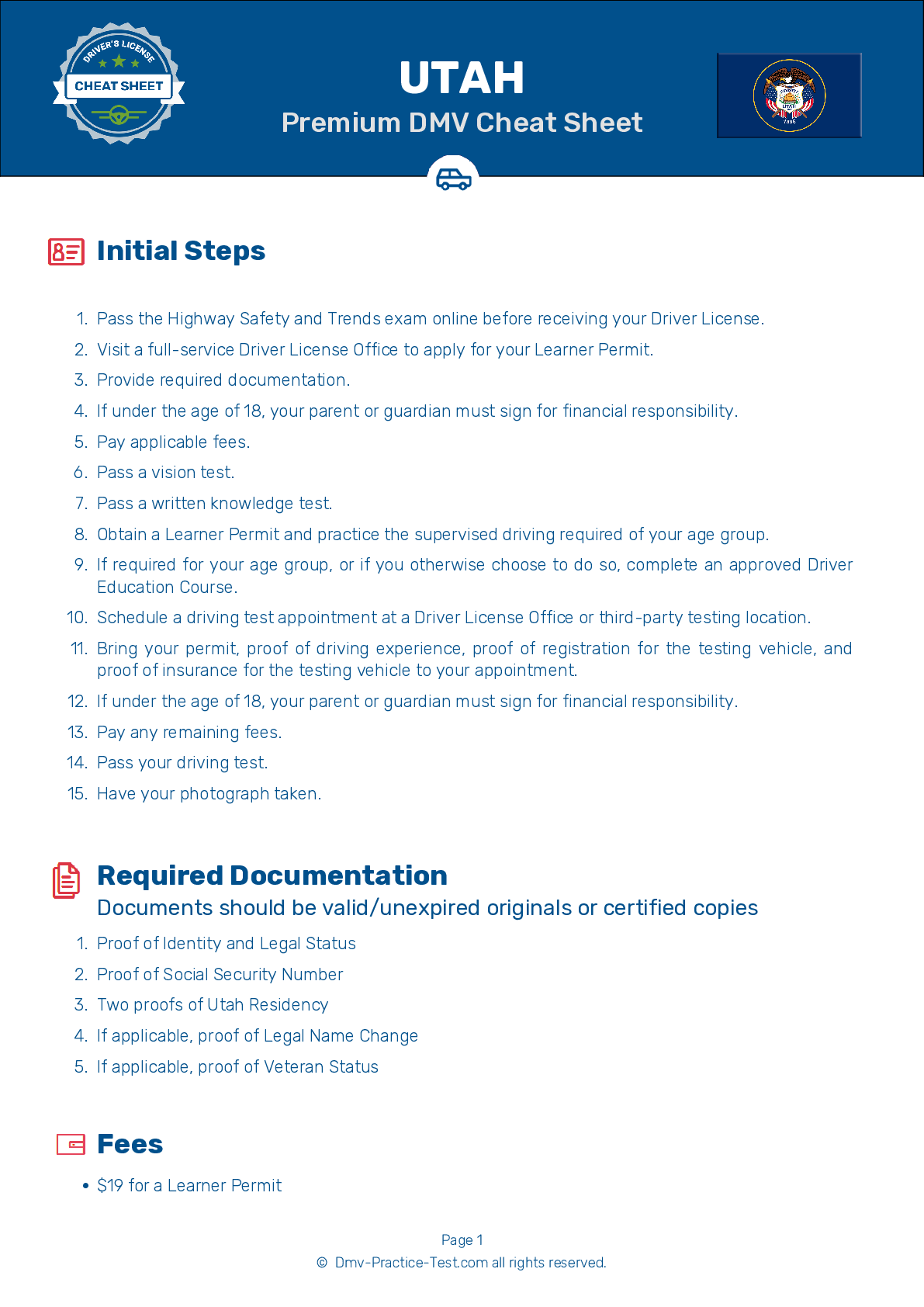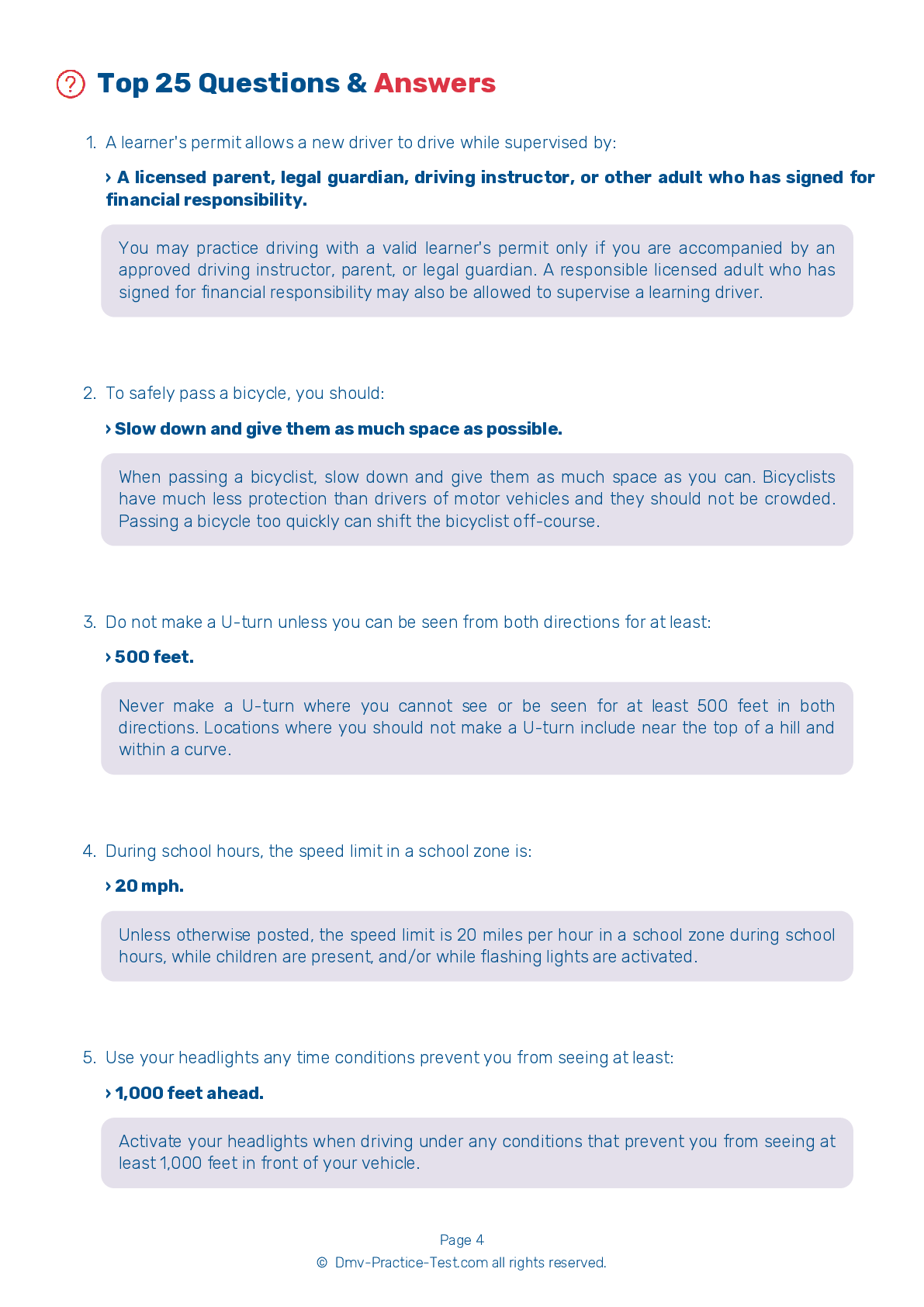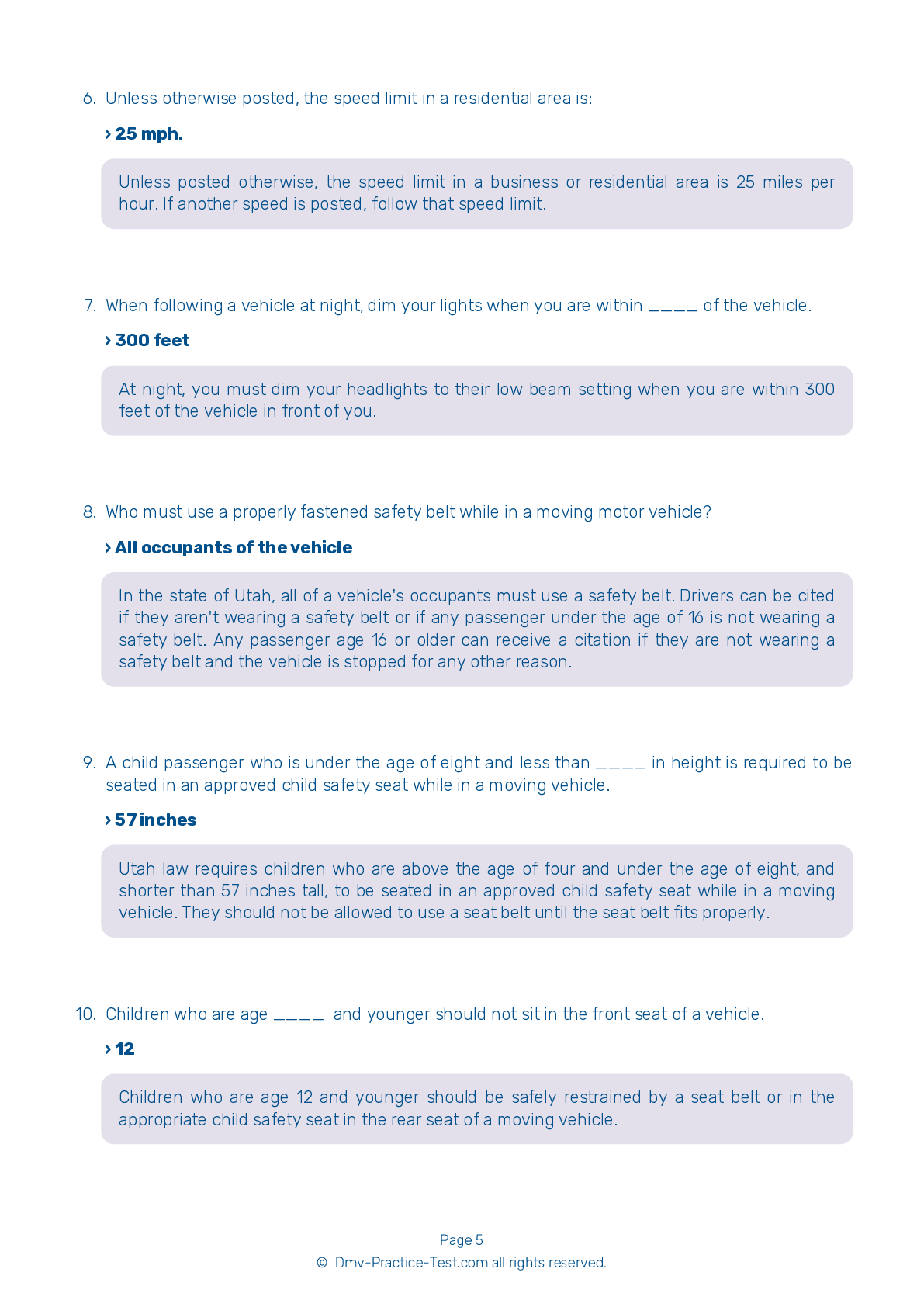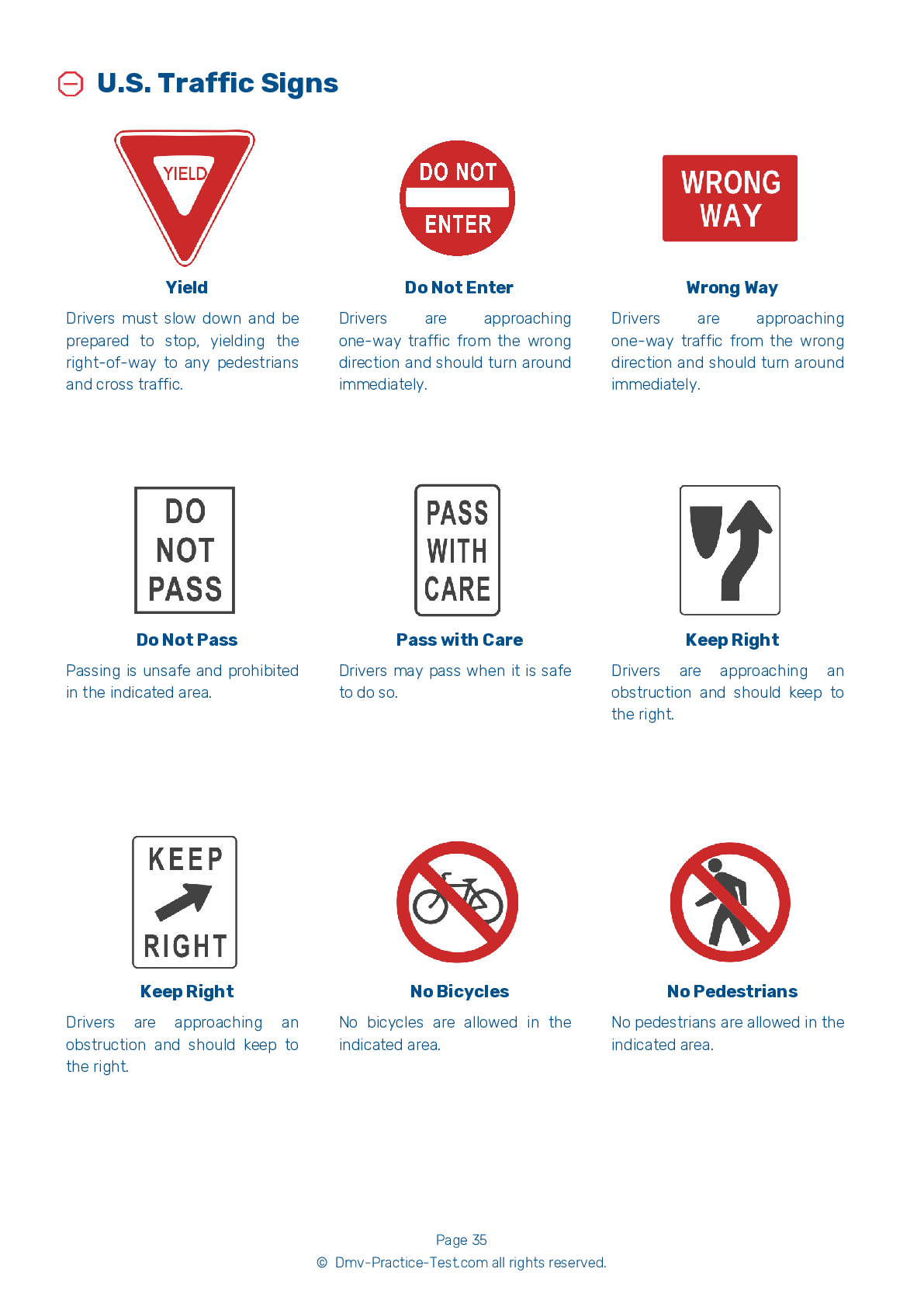FREE Utah DMV Practice Test #12 Page 2 of 3
The practise exams for the Utah DMV have been updated for January 2025. It comprises questions based on the most important traffic signals and laws for 2025 from the Utah Driver Handbook. To study for the DMV driving permit test and driver's licence exam, use actual questions that are very similar (often identical!) to the DMV driving permit test and driver's licence exam.
Each question on the practise exam has a tip and explanation to help you recall the ideas. Questions about traffic rules, traffic signs, and driving statutes, as well as knowledge from the Driver Handbook, will be included in the written portion of the official Utah DMV test.
You must properly answer 20 of the 25 questions to receive a passing mark. Use the Utah Department of Motor Vehicles' practise exam to help you prepare for your instruction permit or driver's licence.
The DMV exam is offered in a variety of languages.
Using any form of testing help will result in an automatic fail, and the DMV may take further action against your driver's licence, so avoid it.
9 . Look over your shoulder to check your blind spot when:
Look over your shoulder to check your blind spot every time you want to change your vehicle's position. If you are turning, changing lanes, or pulling toward or away from a curb, you should check your blind spots.
10 . A learner's permit allows a new driver to drive while supervised by:
You may practice driving with a valid learner's permit only if you are accompanied by an approved driving instructor, parent, or legal guardian. A responsible licensed adult who has signed for financial responsibility may also be allowed to supervise a learning driver.
11 . When driving on wet pavement, it's important to remember:
Wet roadway surfaces can be dangerously slick, especially immediately following a rainfall. When you are driving on wet roads, your vehicle is traveling on a thin layer of oil, dirt, and water. Slow down when there is heavy rain, standing water, or slush on the road to reduce the risk of your wheels losing traction on the slick surface.
12 . You are coming to a railroad crossing where the crossing signals are flashing. You should:
When approaching a railroad crossing, you must stop your vehicle no closer than 15 feet from the nearest rail if an installed electric or mechanical signal is giving warning of an approaching train. Be aware of other warning signs that may indicate an oncoming train, including seeing a lowered crossing gate or hearing an oncoming train.
13 . A regulatory sign containing a red circle with a slash through the middle indicates:
Some regulatory signs prohibit certain actions. These signs are rectangular and white with red and black markings. A red circle and slash on top of a black symbol indicates that the specified action is forbidden.
14 . This sign means:
